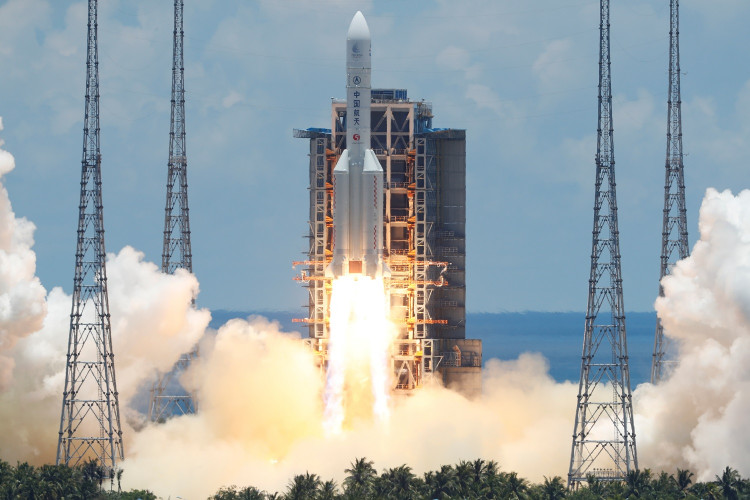China on Saturday launched three satellites into orbit on separate missions to collect commercial data, study the Earth, and hunt dark matter with an X-ray "lobster-eye."
The Ziyuan III 03 Earth-observation satellite and two other payloads were carried by a Long March 4B rocket from the Taiyuan Satellite Launch Center in the northern province of Shanxi.
Debris was raining from the rocket upon liftoff as shown in this video of the launch, which is a normal occurrence during such events. Fans on social media were also treated to some images of the launch, complete with debris from the rocket that had fallen in the Yunyang district of Shiyan City.
The primary payload, Ziyuan III 03, is a high-res Earth-mapping satellite capable of capturing multispectral observations and 3D images. Along with this are two other small satellites designed by Shanghai ASES Spaceflight Technology Co. Ltd., one for "commercial data acquisition" and another for dark matter.
The China Aerospace Science and Technology Corporation (CASC) in a translated statement said that one of the satellites is an X-ray astronomy craft that features "lobster-eye bionic technology" to hunt dark matter. This satellite, called NJU-HKU No. 1, is an experiment by Nanjing University and Hong Kong University to hunt for signals of dark matter.
As for the third satellite, CASC officials said it is part of the Apocalypse constellation that will test key technologies for the Internet of Things in space. The Apocalypse constellation is a project of the Beijing Guodian Gaoke Technology Co. Ltd., according to SpaceNews.
China recently launched its monumental Tianwen-1 probe, the country's first Mars rover. That mission, which lifted off on a Long March 5 rocket from the Wenchang Satellite Launch Center on Hainan Island, will arrive at Mars in February 2021.
China isn't the only country headed for Mars. The U.S. and its partner countries in NASA and the UAE also have Mars missions. The UAE already sent out its Hope orbiter to space, while NASA is set to launch the Perseverance rover on July 30. Perseverance carries with it the Ingenuity helicopter on its belly, which is to become the first vehicle to fly across the surface of another planet.
China's historic moon mission, known as Chang'e-4, is one of the nation's crowning achievements. Last year in January, the China National Space Agency made history when it successfully landed a rover to the far side of the moon - a first for mankind.





